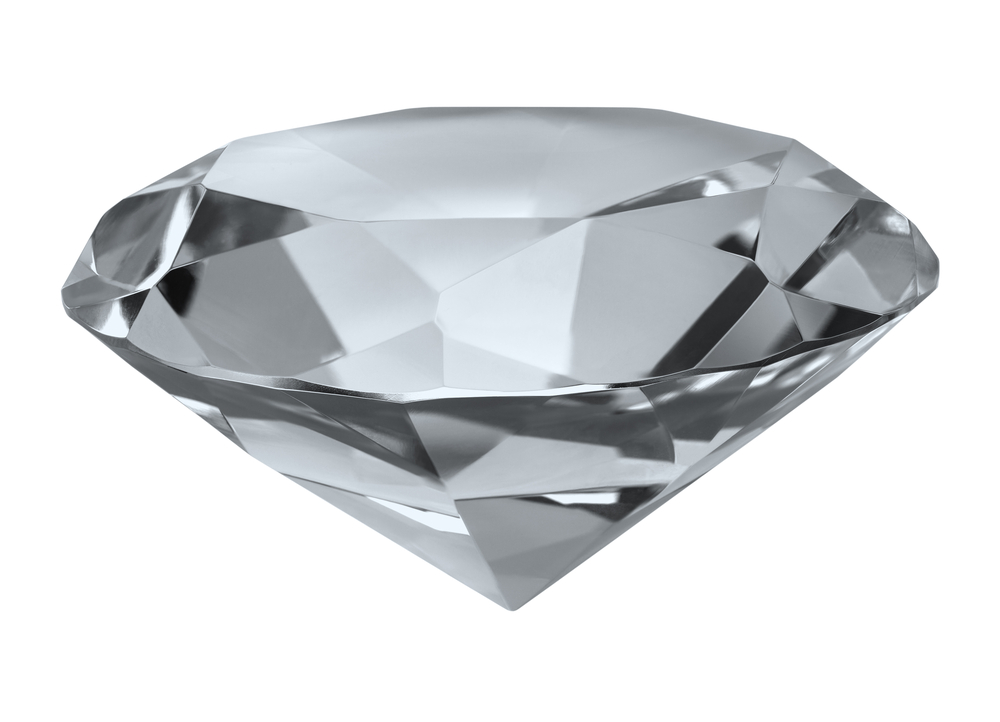|
Zirconia (ZrO2) is best known among ceramics as being both hard and fracture-tough at room temperature. Additionally, its fine (sub-micron) grain size enables excellent surface finishes and the ability to hold a sharp edge.

Image Credit: Shutterstock/ Mega Pixel
Although it retains many properties including corrosion resistance at extremely high temperatures, zirconia does exhibit structural changes that may limit its use to perhaps only 500°C. It also becomes electrically conductive as this temperature is approached.
Zirconia is commonly blended with either MgO, CaO, or Yttria as a stabilizer in order to facilitate transformation toughening. This induces a partial cubic crystal structure instead of fully tetragonal during initial firing, which remains metastable during cooling. Upon impact, the tetragonal precipitates undergo a stress induced phase transformation near an advancing crack tip. This action expands the structure as it absorbs a great deal of energy, and is the cause of the high toughness of this material. Reforming also occurs dramatically with elevated temperature and this negatively affects strength along with 3-7% dimensional expansion. The amount of tetragonal can be controlled by additions of the blends above to balance toughness against loss of strength.
Cubic Zirconia
Cubic Zirconia: This single crystal optically clear form of ZrO2 has a relatively low fracture toughness and strength, but very high thermal shock resistance.
Partially Stabilized Zirconia PSZ
Partially Stabilized Zirconia or PSZ: Cream colored blends with approximately 10% MgO, called partially stabilized zirconia (PSZ), are high in toughness, and retain this property to elevated temperatures. They are somewhat lower in cost but also have larger grain structure.
Tetragonal Zirconia Polycrystals TZP
Tetragonal Zirconia Polycrystal or TZP: Yttria blends of approximately 3% are called tetragonal zirconia polycrystal (TZP) and have the finest grain size. These grades exhibit the highest toughness at room temperature, because they are nearly 100% tetragonal, but this degrades severely between 200 and 500°C as these irreversible crystal transformations also cause dimensional change.
Mechanical Properties of Zirconia
Table 1. Mechanical properties of zirconia
|
|
|
Density
|
5.75
|
gm/cc
|
|
Hardness
|
1120-1300
|
Knoop
|
|
Tensile Strength
|
65
|
kpsi
|
|
Modulus of Elasticity
|
29-30
|
psi x 106
|
|
Flexural Strength
|
100
|
kpsi
|
|
Poisson’s Ratio
|
0.23-0.31
|
-
|
|
Compressive Strength
|
268
|
kpsi
|
|
Fracture Toughness
|
12
|
MPa m1/2
|
Electrical Properties of Zirconia
Table 2. Electrical properties of zirconia
|
|
|
Dielectric Strength
|
250
|
Ac volts/mil
|
|
Dielectric Constant
|
-
|
@ 1MHz
|
|
Volume Resistivity
|
>108
|
ohm-cm2/cm
|
Thermal Properties of Zirconia
Table 3. Thermal properties of zirconia
|
|
|
Coefficient of Thermal Expansion
|
10.1
|
X10-6/°C
|
|
Thermal Conductivity
|
1.8-3.0
|
W/m°K
|
|
Specific Heat
|
0.1
|
cal/g°C
|
|
Max Working Temp
|
1100
|
°C
|
|
Shock Resistance
|
400
|
°C diff
|
All properties are at room temperature unless otherwise noted.
Engineering data are representative, and are not intended as absolute nor warrantable. Manufacturer’s Data shown is blended from multiple sources and therefore illustrates the marketplace.
|